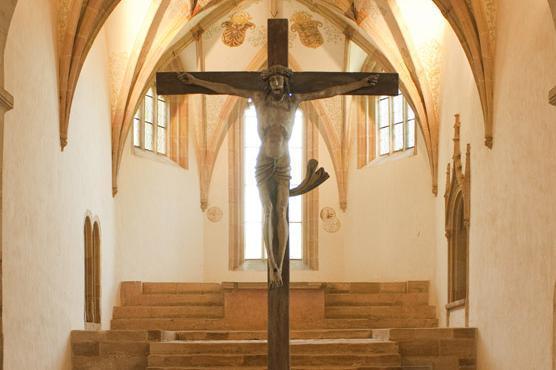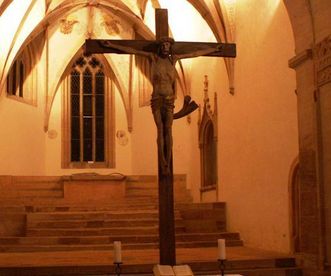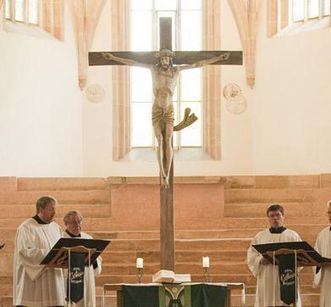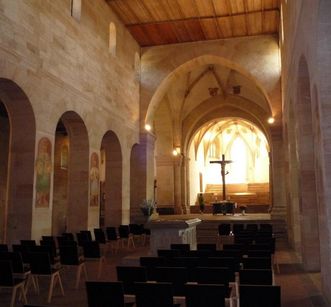Masterpiece from Ulm
The mighty statue was created in an Ulm studio. The old imperial city on the Danube was a center for woodcarving in the late Gothic period. The Lorch Monastery crucifix divulges a special secret to visitors who look closely. The shoulder joints of the dead Christ are movable hinges, and the arms of the sculpture can be laid on the body. Why was this sculpture on the cross made with movable arms more than 500 years ago?






